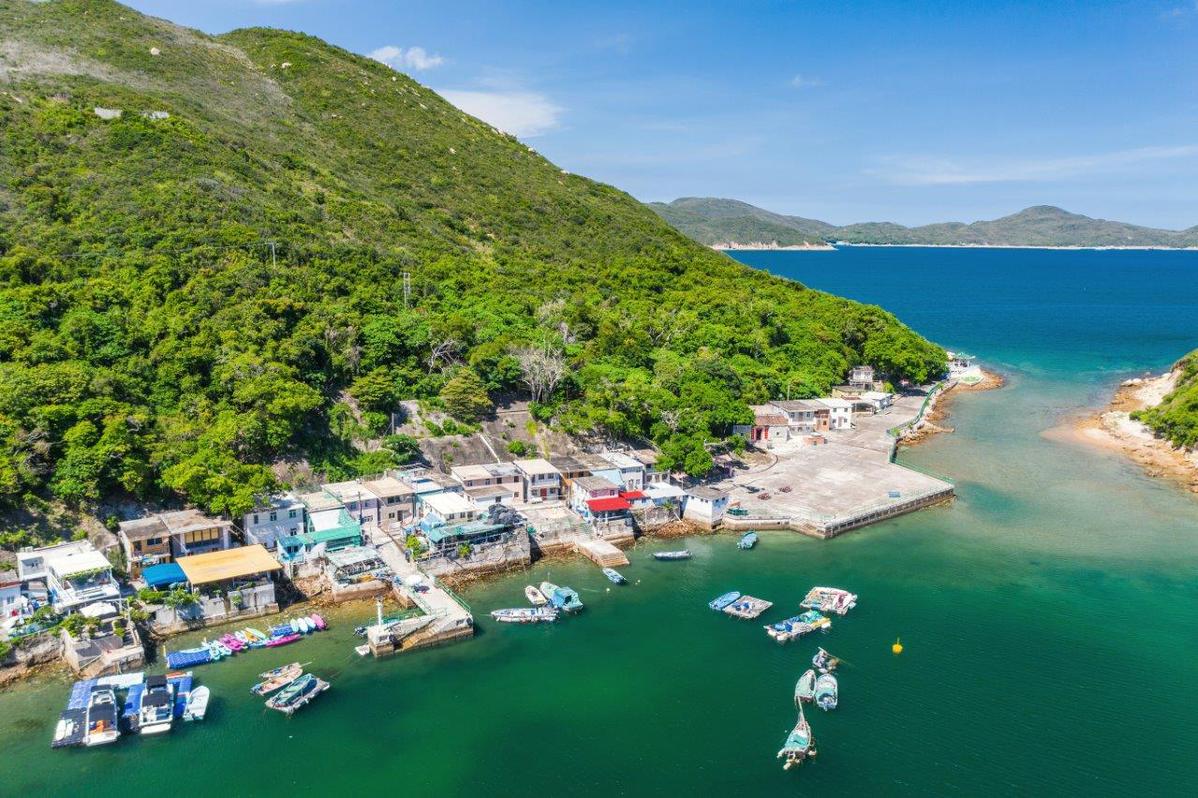
The Kau Sai Chau fishing village is a major attraction of the Hong Kong Tourism Commission-run Sai Kung Hoi Arts Festival. Visitors interested in local history are encouraged to visit the exhibition in the village's story room. [PROVIDED TO CHINA DAILY]
The bun festival held on the island of Cheung Chau in May every year originated in the 19th century. Inhabitants of the island dressed up as gods and enacted the symbolic banishment of the plague and pirates - the two banes of their lives at the time.
The nearly 200-year-old ritual has evolved into the monthlong carnival as we know it today. The parade of children dressed up as legendary heroes and appearing to be floating through the air without any visible support is one of its grandest spectacles, not counting the bun tower climbing contests. The island's restaurants serve mouthwatering vegetarian delights for the duration of the festival, celebrated on the eighth day of the fourth lunar month in the Chinese calendar.
A number of Hong Kong's roughly 260 outlying islands observe time-honored festivals unique to them. Lamma Island, for instance, has several traditional festivities on its cultural calendar. These include the Da Jiu Festival, held in the island's Sok Kwu Wan neighborhood in March, once every four years. The purpose of the festival is to honor local folk gods and pacify wandering spirits. Local people also commemorate their departed ancestors on the occasion. The Tin Hau Festival in April is meant to be a homage to the sea and fishermen, observed at three temples scattered across the island. Held at Luk Chau in May, a second Tin Hau Festival is distinguished by the installation of fa pau - approximately 2.6-meter tall towers made out of paper and bamboo strips that are essential to the ritual. It also features vibrant lion dances and dragon boat races. Yu Lan, or the Hungry Ghost festival, observed in honor of departed ancestors and wandering spirits, takes place in July. Fans of the annual Hong Kong International Dragon Boat Races can head to Lamma Fisherfolk's Village to have a close look at a pair of traditional wooden dragon boats, and even have a go at paddling them.
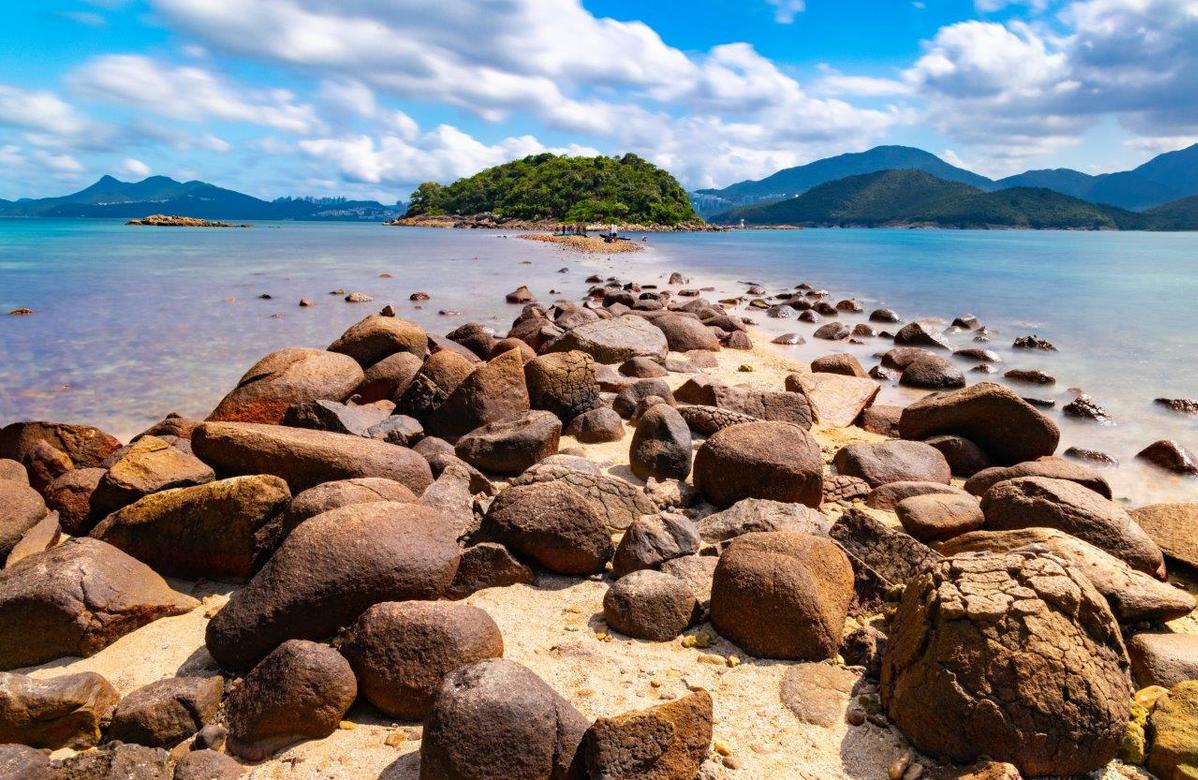
Sharp Island, also a highlight of the Sai Kung Hoi Arts Festival, is part of Hong Kong's Geopark area. It is home to spectacular geological formations, such as the type fondly called "pineapple bun rocks" after a Hong Kong delicacy. [PROVIDED TO CHINA DAILY]
Tradition and topography
Besides the traditional festivals, Hong Kong's islands have also been playing host to a variety of more recently introduced ones, though many in the latter group are about rediscovering and celebrating local traditions. Visitors to such events, often organized with active support from the islanders, get to sample local customs firsthand. The benefits are twofold. While visitors are likely to leave the island with a deeper appreciation of its heritage, their participation, in turn, ensures that local folk traditions continue.
Yim Tin Tsai in Sai Kung district remains pivotal to the Hong Kong Special Administrative Region government's plan to attract tourists. In 2019, the city's Tourism Commission launched an innovative three-year pilot tourism project with the island at its center. The Yim Tin Tsai Arts Festival was aimed at transforming the island into an "open museum", besides giving visitors a fresh and distinctive travel experience that seamlessly integrates arts, religion, culture, heritage and environmental elements.
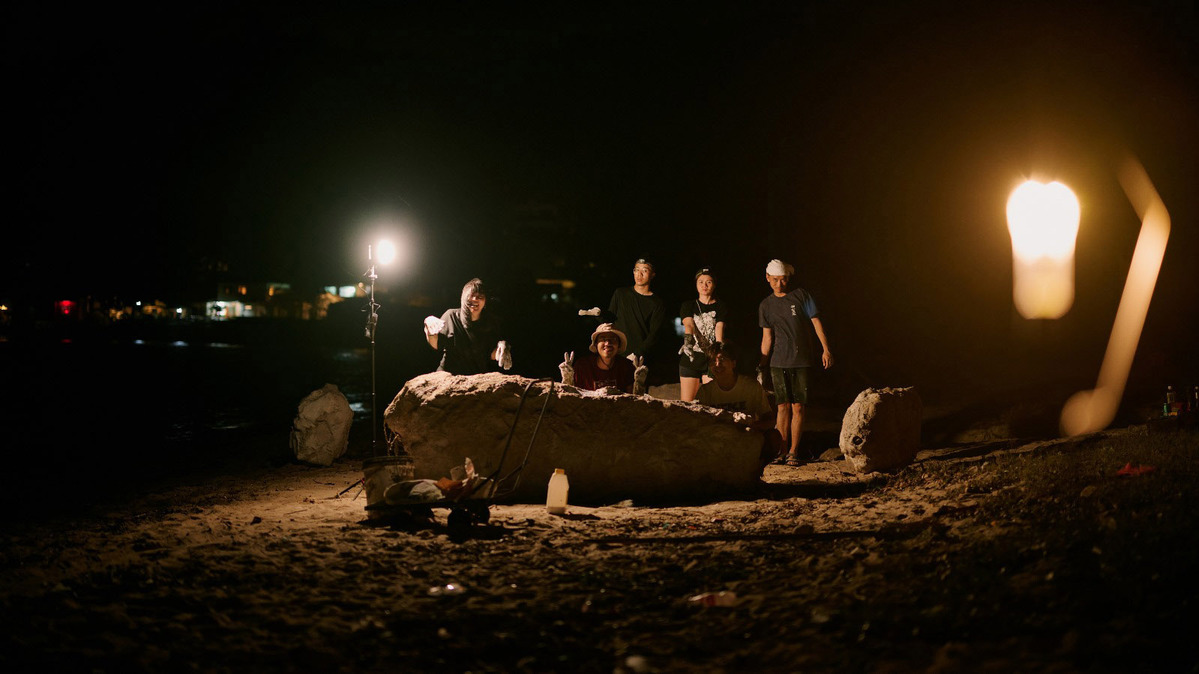
Chi Ma Wan in Lantau Island (above), Cheung Chau and Peng Chau are among the sites of the Inter-Island Festival, which celebrates their interconnectedness via the ferry service. [PROVIDED TO CHINA DAILY]
After the first edition of the festival wrapped in 2021, some of the artworks from it were selected to remain permanently installed on Yim Tin Tsai.
Building on the successes of this pilot project, another three-year Tourism Commission-run festival, supported by the Hong Kong Geopark, was launched in 2022. Called the Sai Kung Hoi Arts Festival, the event is aimed at inspiring visitors to explore "the unique culture, ecological treasures and heritage of the islands within the Sai Kung district", per its website.

Chi Ma Wan in Lantau Island, Cheung Chau (above) and Peng Chau are among the sites of the Inter-Island Festival, which celebrates their interconnectedness via the ferry service. [PROVIDED TO CHINA DAILY]
The festival's third edition kicks off on Nov 13 and will run for two months. Covering a much larger area than its predecessor, the Sai Kung Hoi Arts Festival offers more variety in terms of scenic beauty and local culture.
Chan Yu-nam, senior Geopark officer of Hong Kong's Agriculture, Fisheries and Conservation Department, lists the festival's major attractions thus: "High Island has a beautiful coastal landscape and an interesting mix of Hakka and fisherfolk-related history. Visitors can drop by at the Tin Hau temple, which is a Grade-III historic building. The Tin Hau Festival observed in High Island is one of the biggest events in Sai Kung, and held every two years. Connected by two other dams, the East Dam of the High Island Reservoir comes with a view of the world-class hexagonal volcanic rock columns.

Chi Ma Wan in Lantau Island, Cheung Chau and Peng Chau (above) are among the sites of the Inter-Island Festival, which celebrates their interconnectedness via the ferry service. [PROVIDED TO CHINA DAILY]
"Sharp Island, another Geopark attraction of the Sai Kung Hoi Arts Festival, features Hong Kong's famous pineapple bun rocks, and has a tombolo emerging only at low tide," Chan continues. "Last but not the least, visitors can check out the story room in the tranquil fishing village of Kau Sai Chau for an introduction to the history of the village. The exhibition comes with a display of fishing tools. The village's magnificent Hung Shing Temple is a declared monument.
"The festival, with its creative artworks and innovative activities, has been successful in attracting young people," says Chan. "We have noted that youngsters from different backgrounds have shown interest in exploring these islands."
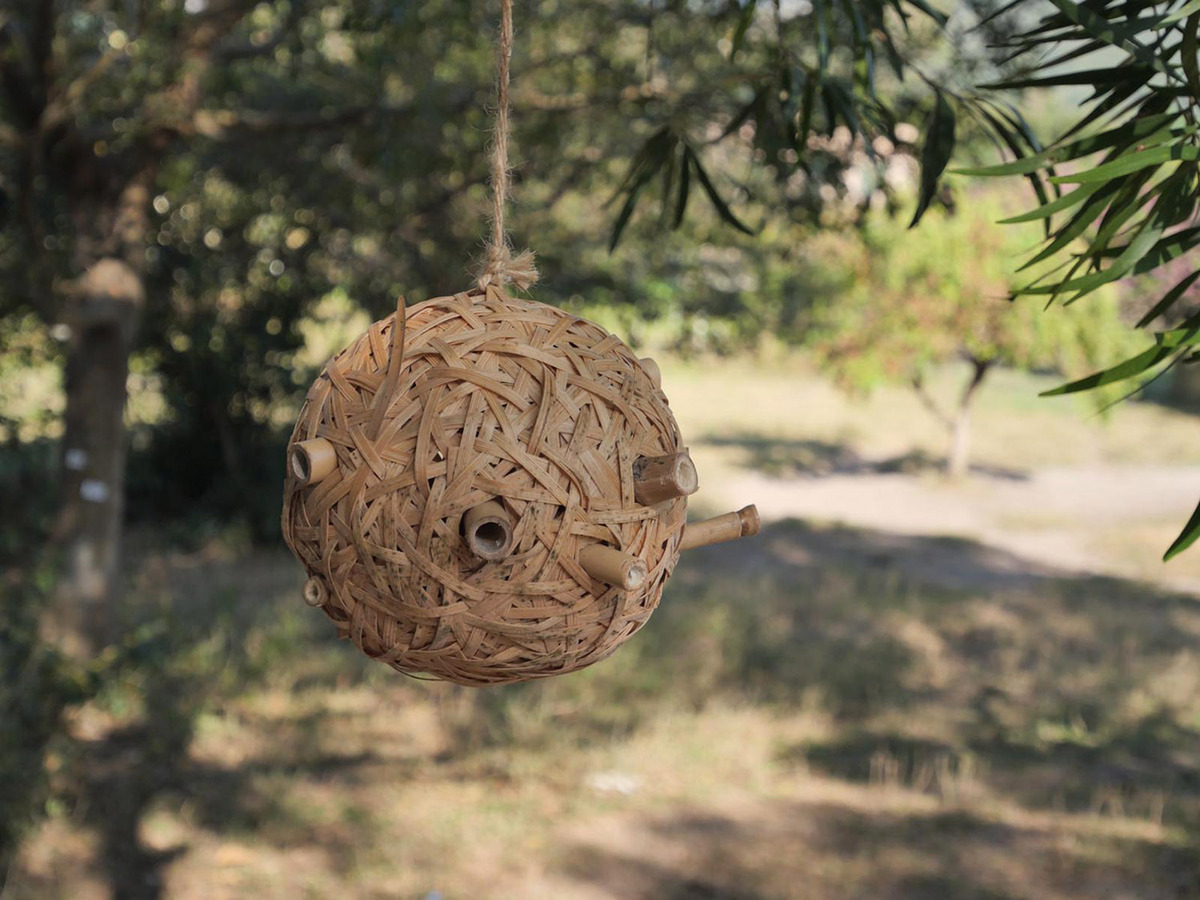
The 2023 Inter-Island Festival saw “bee hotels” installed in Mui Wo and Peng Chau. [PROVIDED TO CHINA DAILY]
Marine connections
Launched in March 2021, the Inter-Island Festival is a celebration of the interconnectedness of the islands of Cheung Chau, Peng Chau and Lantau, which is linked to the first two via its ports of Mui Wo and Chi Ma Wan. The festival invites visitors to explore the lifestyles and local culture of the people connected by ferry travel. Its second edition was held in November 2023, and the next one is due in 2026.
Its most-recent edition drew over 10,000 visitors. The festival featured an impressive lineup of more than 70 events, including tours, workshops, installations, performances, open days, and screenings. Islanders had a presence in every department of the festival, taking on the roles of organizers, volunteers, attendees and donors, reflecting a strong sense of community bonding and local pride.

Lingnan University academic Roger Lee is part of the team behind the project meant to raise awareness of the natural habitat of bees and the installation of a bee hotel in progress. [PROVIDED TO CHINA DAILY]
"We anchor this festival on the interisland ferry service that runs daily between Cheung Chau, Chi Ma Wan, Mui Wo and Peng Chau, attesting to the historical and contemporary links that exist between these ports, creating an interisland neighborhood," says Inter-Island Festival co-founder Kit Chan. "We also aim at showing the richness and diversity of the different ways in which people live in Hong Kong."
Closed down in the '80s, Peng Chau Theatre opened its doors to the public for the first time in over three decades to host two exhibitions that were a part of the festival. My Path to Peng Chau Cinema by Jiming Lu invited visitors to take a journey down memory lane, based on the accounts of those who remembered the facility from a time when it was functional. Situating Circatidal, put together by Fok Chun-wing, Joanne Chan, and Tommy Hui, offered visitors an immersive encounter with the biodiversity patterns in the coastal environments surrounding Peng Chau and Mui Wo.
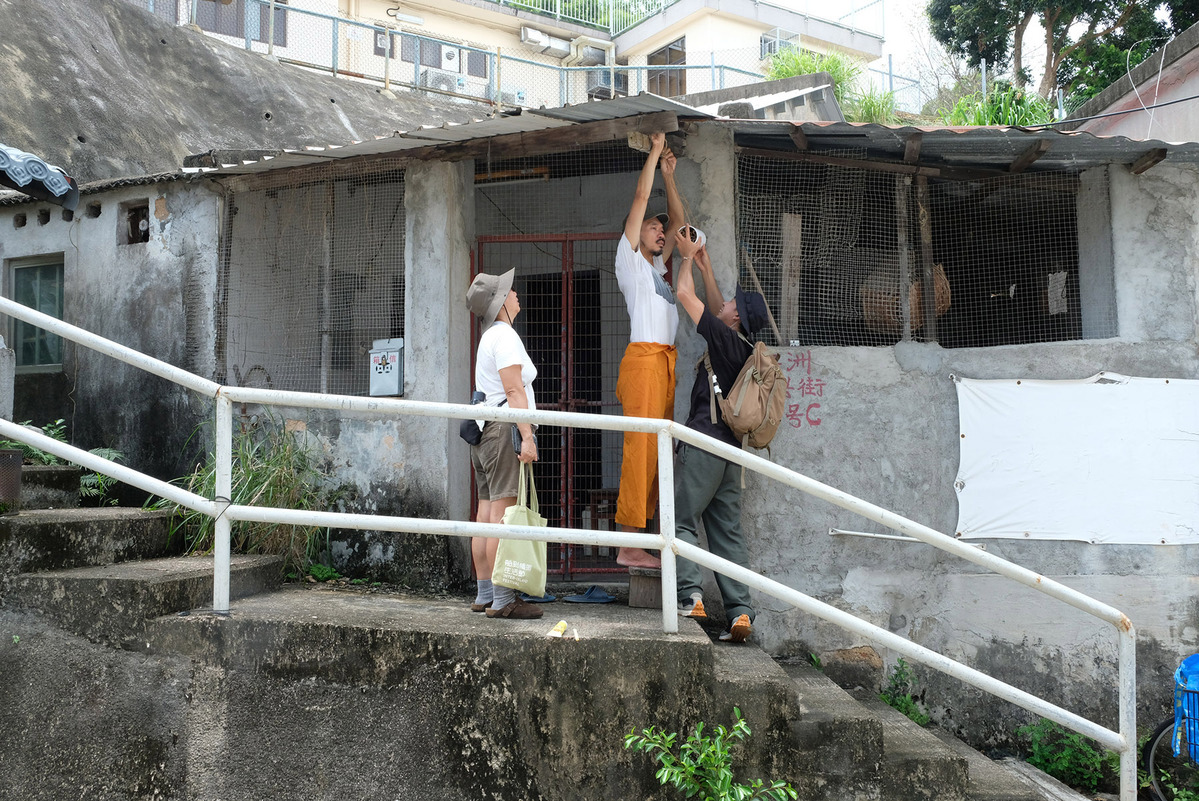
Lingnan University academic Roger Lee is part of the team behind the project meant to raise awareness of the natural habitat of bees and the installation of a bee hotel in progress. [PROVIDED TO CHINA DAILY]
Green thoughts
Ten years ago, Kit Chan and a few like-minded friends chose to set up home on one of the three islands covered by the festival. Besides being inspired by the interconnectedness between them, they felt strongly about conserving the distinct art traditions and cultural communities of each island. "It was important for us to strengthen and celebrate the vibrant lifestyles of these places, and make residents, both old and new, aware of this rich heritage that we could build on in our own ways," Chan says.
For its past two editions, Inter-Island Festival organizers have collaborated with people from various creative fields to come up with diverse programs. The range stretches from thought-provoking workshops where participants learn the nitty-gritty of generating images by using artificial intelligence, to screenings of short documentaries like Daphne Wong's Sea of Noise, on how sound pollution is causing harm to endangered white dolphins in Hong Kong's seas.
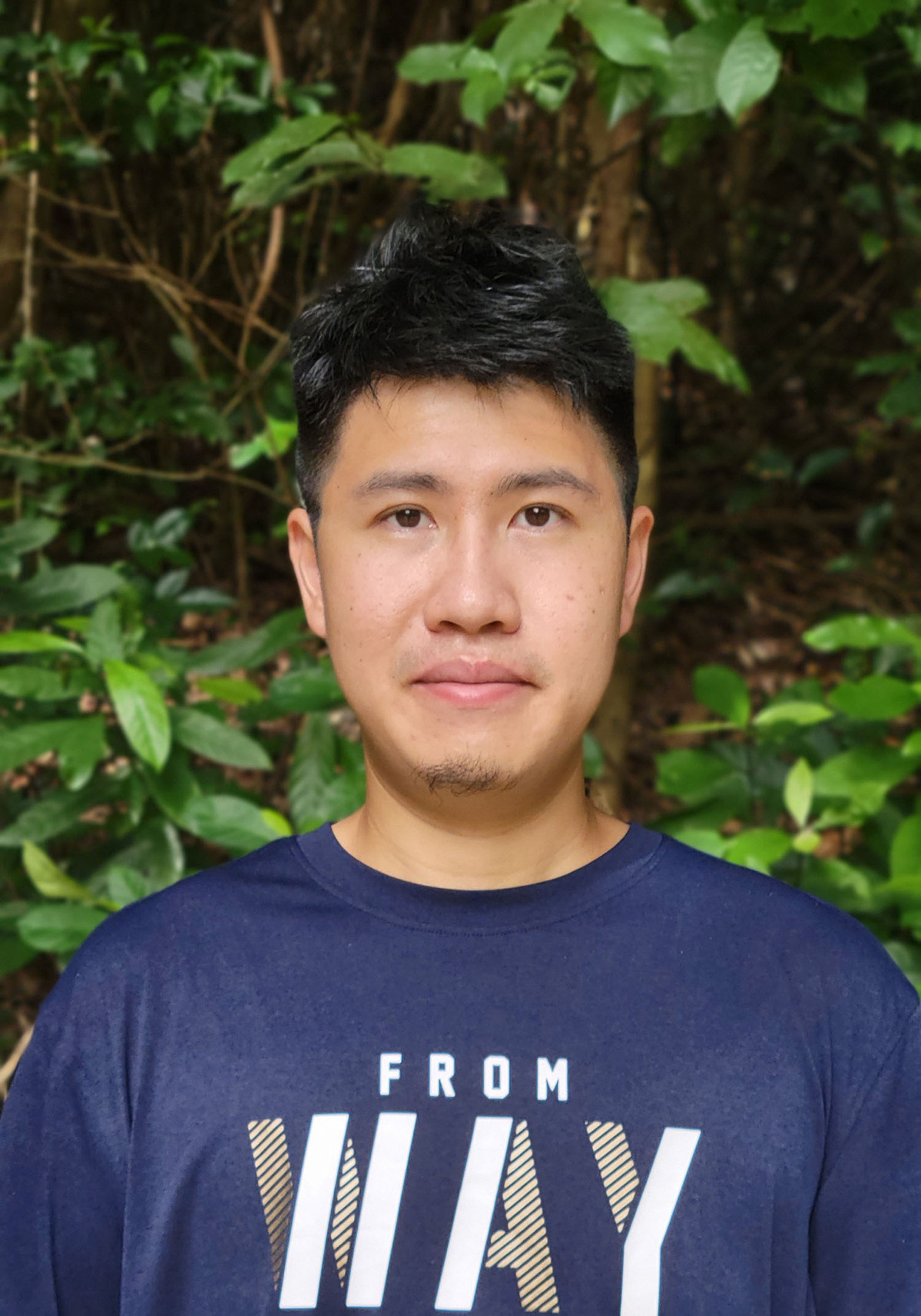
Tommy Hui (above), who led a tour of the rocky coast of Peng Chau as part of Inter-Island Festival 2023, says the aim was to have participants take away "some basic understanding of the local ecosystem and species". [PROVIDED TO CHINA DAILY]
Unsurprisingly, concern for the local environment informs the festival programming to a large extent. In 2023, Hui led the Peng Chau Rocky Shore Tour, which was meant to familiarize participants with the dynamic relationships between tides, coastal environments, and diverse organisms inhabiting the interisland area.
"I always think it is important to document the biodiversity around us," Hui says, adding that he would like participants to take away "some basic understanding of the local ecosystem and species" from the experience. "I think I can contribute to the festival by raising awareness of the coastal system around us," he says.

Tommy Hui, who led a tour of the rocky coast of Peng Chau (above) as part of Inter-Island Festival 2023, says the aim was to have participants take away "some basic understanding of the local ecosystem and species". [PROVIDED TO CHINA DAILY]
So bee it
From the outset, practitioners of indigenous craft and cultural heritage traditions have figured in the Inter-Island Festival. In 2023, artists from the Lantau Shanto Studio in Mui Wo and the bamboo crafts workshop Yiwooo in Peng Chau joined forces with the Science Unit of Lingnan University to form a project team for the festival.
"Our goal was to organize a mini-education program during the festival to raise public awareness about solitary bees and wasps," says Roger Lee, a research assistant professor at the Science Unit. "After an enjoyable brainstorming session, we developed a project called Island Bee & Bee."
Using locally sourced materials such as Mui Wo clay and Peng Chau bamboo, a series of "bee hotels" were created and installed in both locations. Each comes with educational panels offering insights into the ecology in which bees thrive and their significance as pollinators.
At the workshops held as part of the project, participants were invited to make their own bee hotels using locally available materials, once again with a view to raising awareness about the importance of supporting local biodiversity.
"I believe both Hong Kong residents and overseas visitors had an enjoyable time at the Inter-Island Festival, given its diverse range of activities and emphasis on local culture," Lee says. "It provides a unique perspective for tourists to experience Hong Kong's rural communities and their distinct cultural heritages."